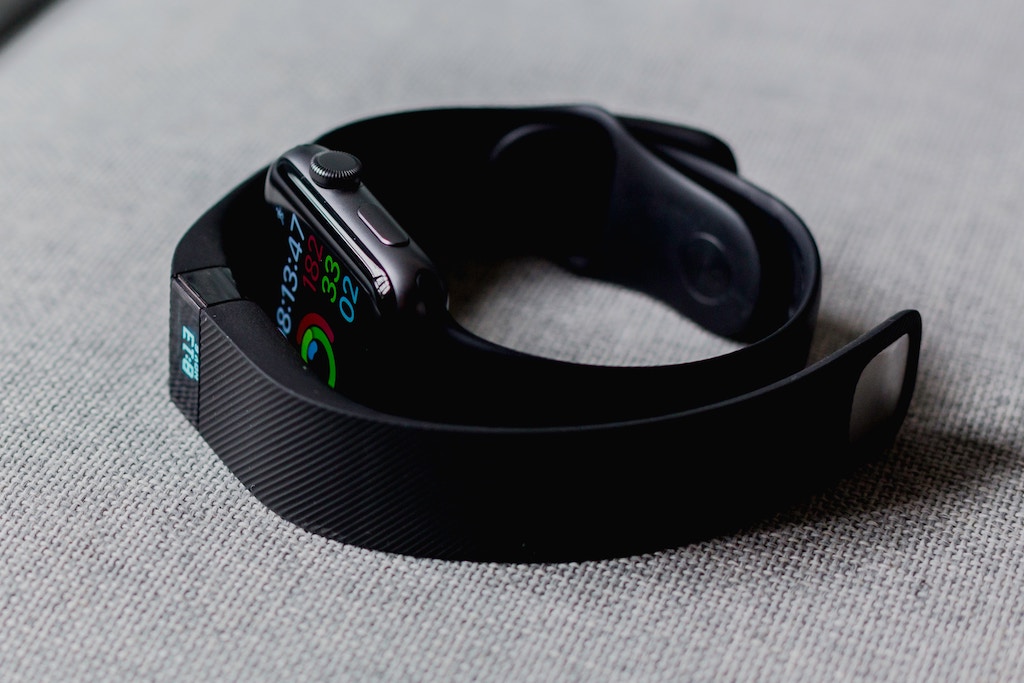From Sleeping to Sprinting: Activity Trackers Explained
By Emily Stewart.
Published on November 15th, 2017
While the jury is still out regarding the effectiveness of activity trackers in helping wearers to live well, the fitness tracker industry is nonetheless booming. The new fitness band is an all-encompassing tiny computer that informs on everything we do -- from what we eat to who's messaging us. Today's “every-man” trackers are based on historical workout tracker devices used by athletes to track distances cycled and or as a heart monitor.

Now, the activity tracking watch being worn today by millions of people take the concept much further. Further research needs to be undertaken to determine whether fitness watches lead to more unhealthy behaviors than they aid. And yet, the technology applied to these devices is exciting, innovative, and efficient.
What are activity tracker watches?
A simple Google search reveals that fitness trackers are “wearable device[s]...that record a person's daily physical activity, together with data relating to their or fitness or health, such as the number of calories burned, heart rate, etc.” The best fitness tracker allows users to set goals, like number of steps walked daily. Some use the device purely for their exercise regime, choosing ones that are programmable with workouts. Such options should have an LED screen that prompts the next exercise.
While activity trackers notice steps and movement, they do not offer metrics for specific sports -- they can tell that you're burning calories, just not how. Most offer the option for the user to notate what type of activity they were doing, though. On this level, their accuracy is difficult to assess. There are more specific activity-based exercise tools, like running watches and Garmin cycling trackers. But all those fancy watches we see people wearing on the wrists like a watch are more well-rounded and less specific.
Holistic physical awareness

As technology related to fitness watches grows, so does their functionality. The newest trackers integrate a variety of analysis -- from calories eaten to calories burned; hours slept to hours restlessly rolling around; fatigue to energy bursts; even the amount of UV rays the skin is exposed to. Most people enjoy the disguise of wearing an activity tracker as a wristband, but the technology works in many forms.
Some are pendants that hang on necklaces; others tuck into pockets or clip onto belts. Such variety encourages users to wear the device all day, everyday, which is the key to their sustained effectiveness in monitoring and influencing lifestyle changes. While these tiny computers are clever, their reports are basically guesses -- they use easy-to-identify changes in the body, like pulse and movement, to inference what was happening in the user's life.
Technological integration
If people are always carrying their phones, and always wearing their activity tracker watch, why not merge the two? Well-known companies like Apple, Timex, Sony, and Microsoft now offer activity trackers that merge fitness functionality with individual operational effectiveness. Today's fitness band allows users to check their calorie intake on the same wristband that shows a running display of SMS messages. Receive calendar notices and emails with the swipe of a finger; the next swipe shows hours slept and steps taken.

Using Bluetooth technologies, the newest wave of activity watches can swipe for payments at the checkout counter, send and receive calls. Users can get creative with their tracking: does checking Facebook messages cause a rise in blood pressure? Users need only ensure that their choice of activity tracker merges with their type of mobile phone (obviously, Apple activity trackers pair with the rest of the Apple product universe).
What is a FitBit?
While most major telecommunication companies and many sports manufacturers sell fitness trackers, the most recognized type of tracking device is probably FitBit. As one of the first activity trackers on the market, the FitBit was created in 2008 as way to hold users accountable to becoming more active, eating a more well-rounded diet, and sleeping better. At that time it was a clothes-pin-size clip. Like today, the device continuously monitors a user's movement, including their sleep patterns. FitBit maintains a high industry ranking in part because of its myriad of styles, functions, and price points.

The FitBit bracelet uses organic light-emitting diodes that show current activity data with the touch of a finger. Variables include: how water resistant the watches are; the colors the watches are available in; the devices it connects to; what aspects of the physical self are tracked; how it charges; and how high-tech its elements are.
Each fitbit bracelet is designed to serve a specific purpose. For instance, the FitBit Charge 2 is the most comprehensive heart tracker. Not only does it track heart rate 24/7, but it also monitors blood pulse and VO2 max. The FitBit Blaze is intended as a guided workout tool, as it has a 1.35-inch color display. FitBit HR is great for travellers, as it has a strong battery that requires less re-charging.
At the time of writing, there are six different types of fitbit wristband. How much does a fitbit cost? If you're looking for cheap fitbit watches, FitBit Zip is the lowest-price.
The Bottom Line
Whether you're looking for a smartwatch or pocket pendant, there's no reason to relegate your activity tracker to your fitness regime. The newest fitness tracker watch is intended to help users integrate their health consciousness with their day-to-day activities. While activity watches support a holistic approach to health, their actual effectiveness in aiding users to make good decisions is questionable. Some studies argue that they may lead to obsessive behaviours. When choosing an activity tracker, choose something that meets your lifestyle needs, from the money invested to your goals in using it!

About the author
Emily Stewart calls herself a “Pi-Fit-Yogi,” teaching yoga, Pilates, and blended classes all around the world. You can reach her at ahumandoing.org